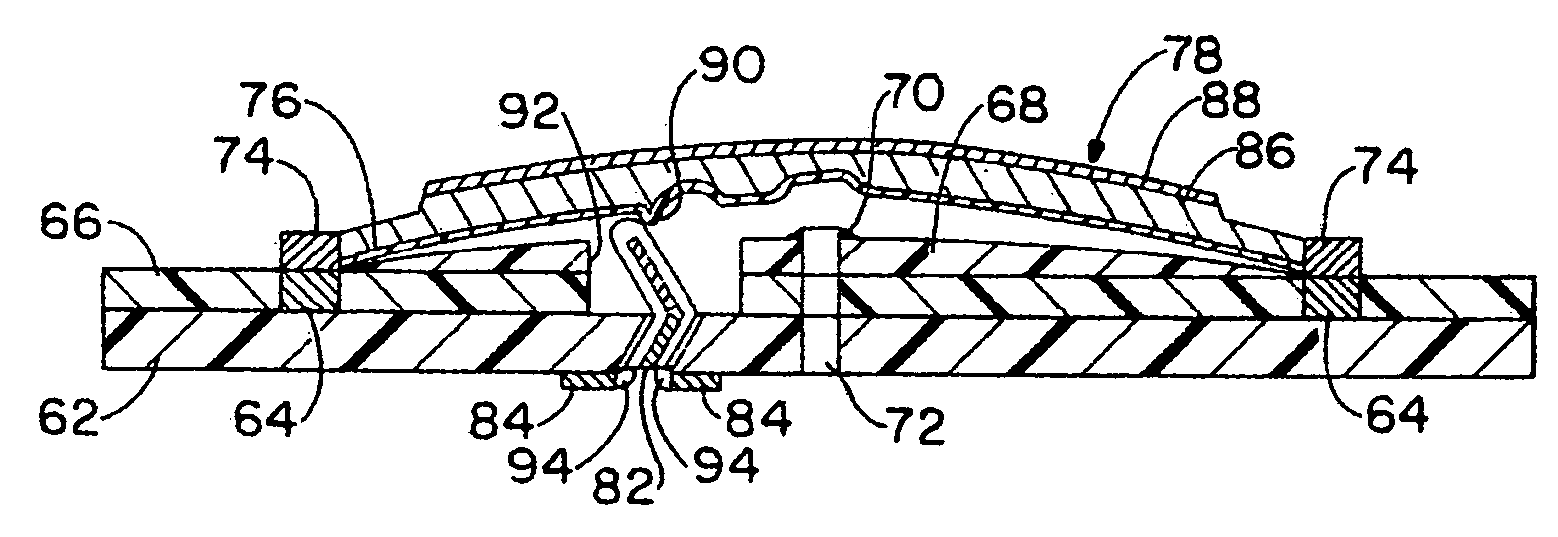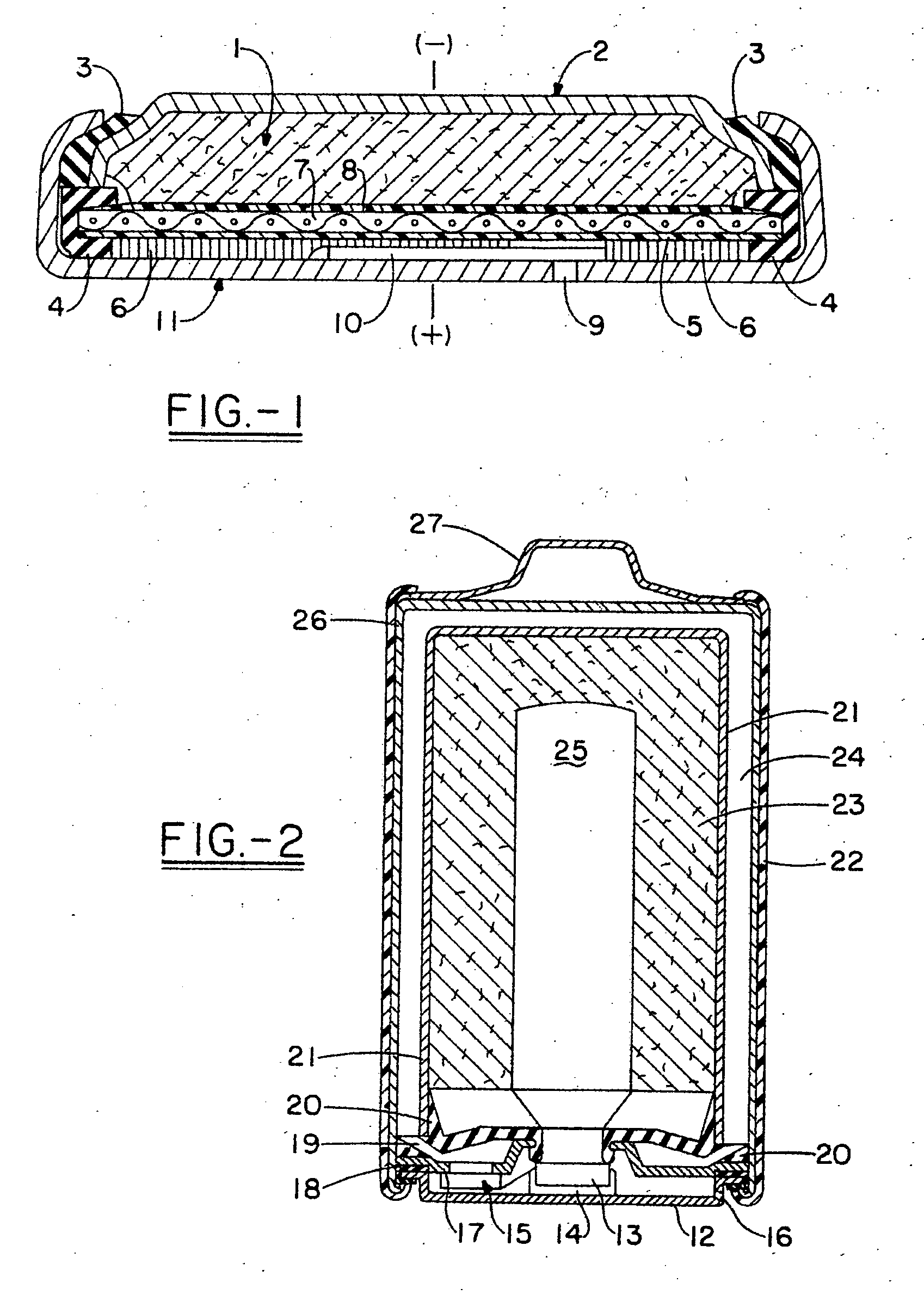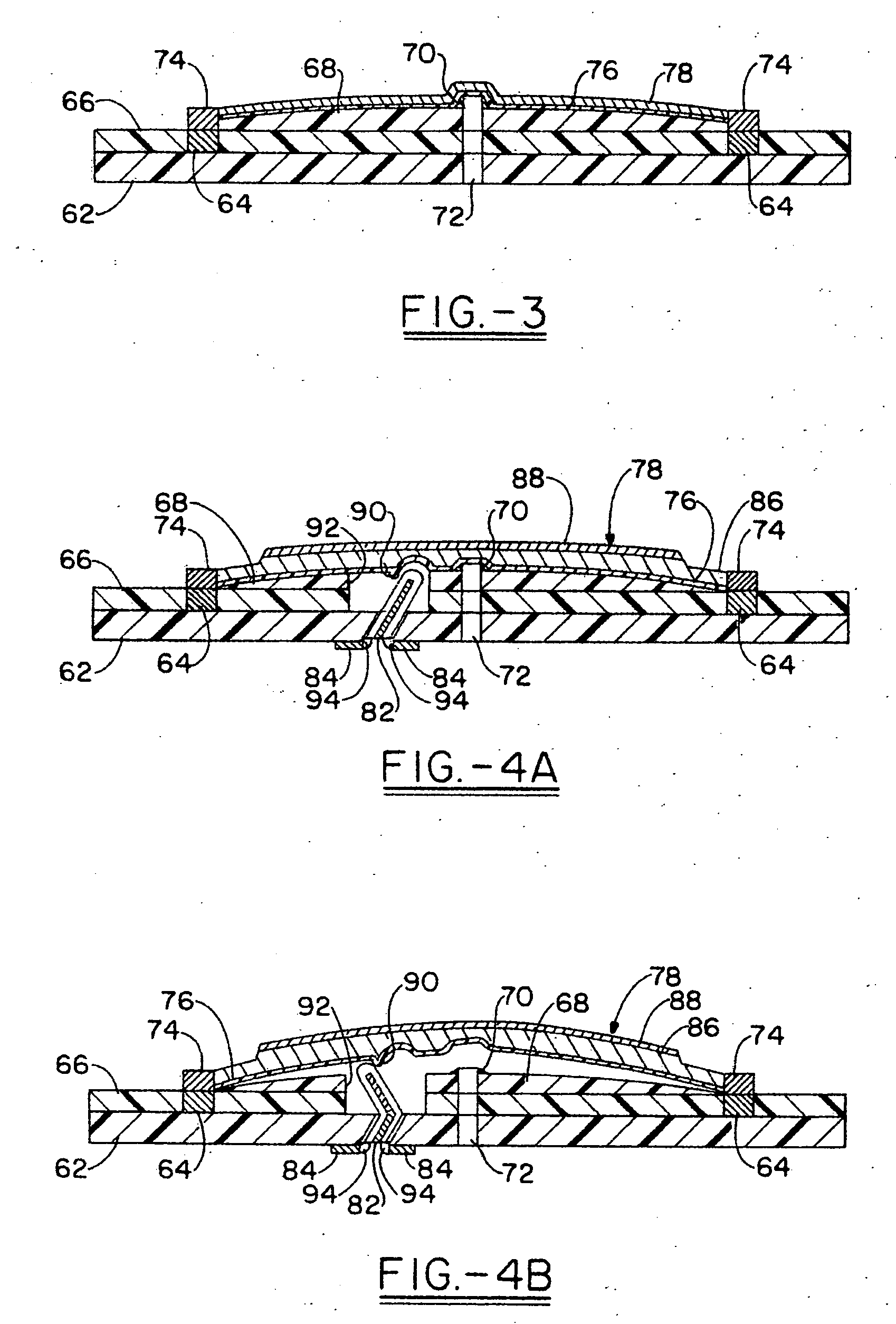Fluid regulating microvalve assembly for fluid consuming cells
a micro-valve and fluid-consuming technology, applied in the direction of cell components, cell component details, electrochemical generators, etc., can solve the problems of limited maximum discharge rate, and reduced material use in oxygen reduction electrodes. low cost, inexpensive and simple to produce
- Summary
- Abstract
- Description
- Claims
- Application Information
AI Technical Summary
Benefits of technology
Problems solved by technology
Method used
Image
Examples
Embodiment Construction
[0034] In one embodiment of the invention, a fluid regulating microvalve assembly is operatively connected to a cell that uses a fluid, such as oxygen or other gas or gases, from an exterior of the cell, such as the surrounding atmosphere, as an active material for an electrode present in the interior of the cell. The fluid regulating microvalve assembly controls the flow rate of fluid between the exterior and interior of the cell and ultimately the flow rate to a fluid consuming electrode, such as an oxygen reduction electrode. The cell can be a fuel cell such as a methanol or hydrogen fueled oxygen cell, an air-depolarized cell, or an air-assisted cell as known in the art. Other possible cell types include, but are not limited to, chlorine or bromine depolarized cells. Also, the microvalve assemblies of the present invention can be used in “reserve” cells where the fluid admitted into a predetermined area of the cell by the microvalve assembly is stored in a separate reservoir unt...
PUM
 Login to View More
Login to View More Abstract
Description
Claims
Application Information
 Login to View More
Login to View More - R&D
- Intellectual Property
- Life Sciences
- Materials
- Tech Scout
- Unparalleled Data Quality
- Higher Quality Content
- 60% Fewer Hallucinations
Browse by: Latest US Patents, China's latest patents, Technical Efficacy Thesaurus, Application Domain, Technology Topic, Popular Technical Reports.
© 2025 PatSnap. All rights reserved.Legal|Privacy policy|Modern Slavery Act Transparency Statement|Sitemap|About US| Contact US: help@patsnap.com



